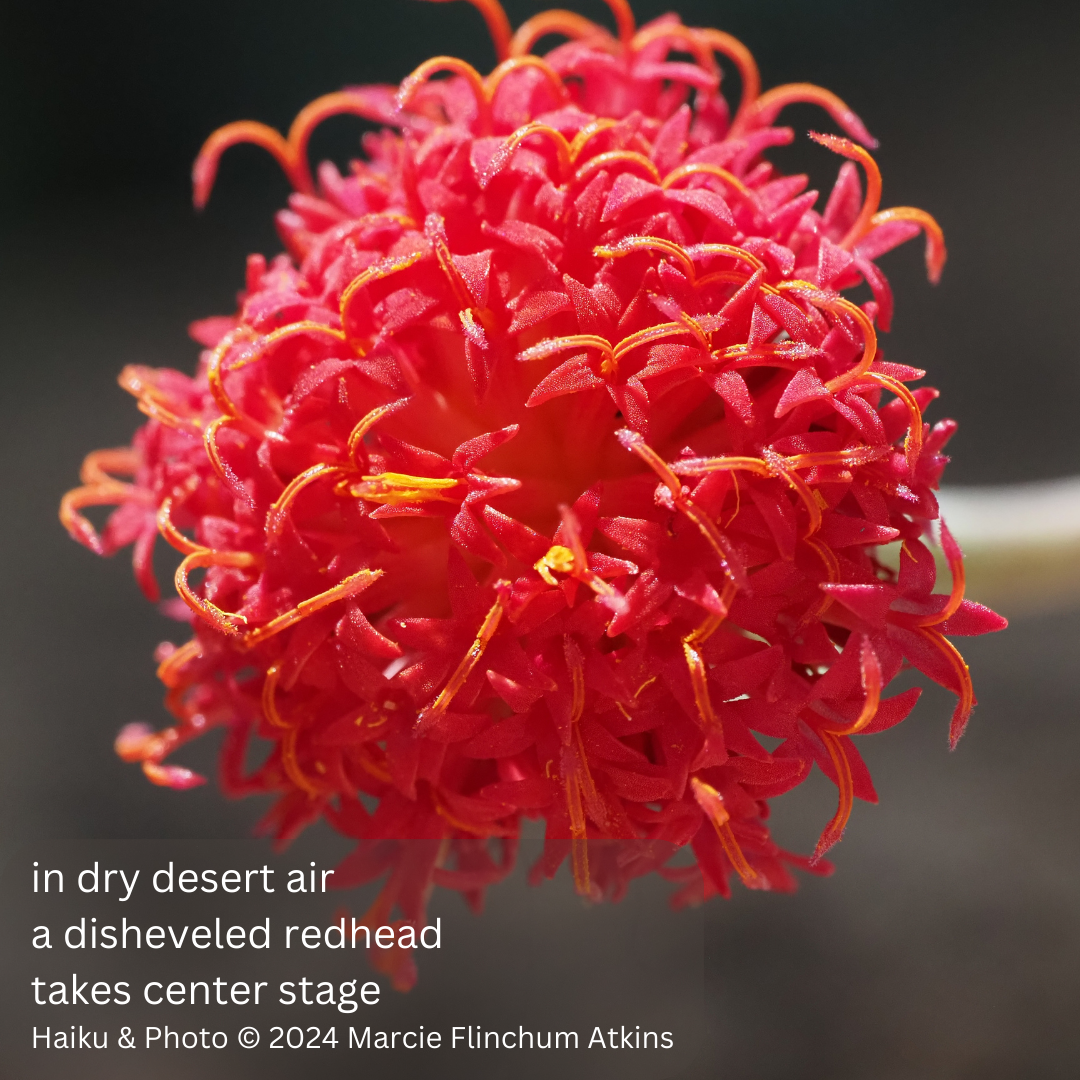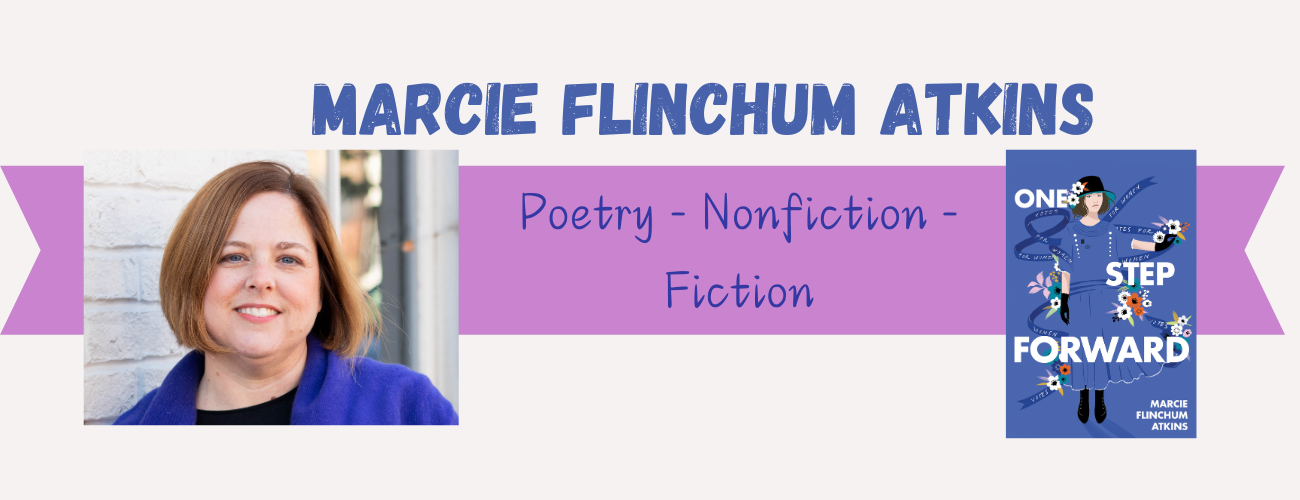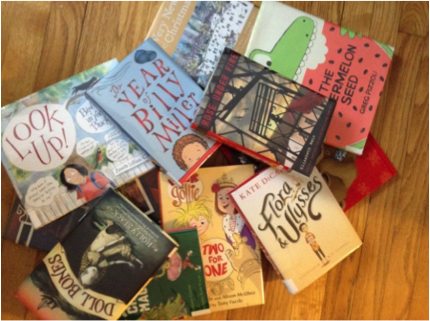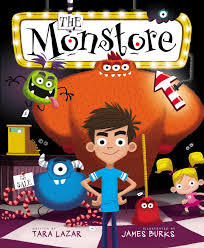
Poetry Friday: Axolotl Poem Process
Matt at Radio, Rhythm & Rhyme is our host this week. Hop on over there for the roundup.
Axolotl Poem Process
I have a twelve-line poem titled “Axolotl” in Pomelo Books’ newest anthology, Clara’s Kooky Compendium of Thimblethoughts and Wonderfuzz. I’m personally always fascinated by how other poets get from blank page to a finished poem, so I thought I’d walk you through my process for this poem.
I am “team handwritten draft” for my poetry. I do so much scribbling, crossing out, and rewriting. There’s just something about writing by hand for me that works. I don’t always do this for other types of writing, but for poetry, I start in a notebook 99% of the time. I’m going to include some of those messy handwritten pages.
You are welcome to share these with students as I think it’s helpful to see that poems don’t always come out fully formed (at least for me). I do a lot of thinking on paper.
1) Ideas!
Sylvia and Janet asked contributors to come up with something that was interesting to them to write about. I made a list of things I was fascinated by. I ultimately chose three things: garden gnomes, axolotls, and cicadas.
Students at my school LOVE axolotls–they can’t get enough axolotl books.
2) Research
I first did some basic research on axolotls and wrote down some notes, questions that I have, and possibilities for facts I could incorporate into a poem.
3) Brainstorming
We were also asked to connect our poems to a skill that students learn in language arts. I chose silent letters, onomatopoeia, and homophones.
So I brainstormed some potential words with silent letters to go in an axolotl poems.
I also brainstormed some rhyming words.
4) Drafting
I wrote a first draft with lots of starts and stops using some of the words with silent letters.
5) Switching gears
My first draft and idea didn’t work like I’d hoped, so I tried something different. I brainstormed some homophones that I could use in another completely different draft.
6) New Draft
I drafted a completely different poem.
7) Revision
Finally, I typed up my draft with some changes. Then I read it aloud, scanned it (marked stressed and unstressed syllables) and then made more changes.
8) Final draft
This is the published version of the poem. The published book has amazing art by Frank Ramspott.
Haiku of the Week
in dry desert air
a disheveled redhead
takes center stage
Haiku & Photo © 2024 Marcie Flinchum Atkins
Photo Taken: October 5, 2024 at United States Botanic Garden
Haiku Written: October 11, 2024
Poem as Picture Book
By Debra Shumaker
Illustrated by Josée Bisaillon
Kids Can Press, 2024
This 279-word poem metaphorically describes wind.
Poetry Connections
- Metaphor
- Alliteration
- Assonance
- Consonance
- Vivid verbs
- Imagery
Links
Grow
Last week I talked about how I was working on a book stanza by stanza. I finally finished a draft of the book this week. It always is such a sigh of relief. I definitely subscribe to the “get it down, then fix it up” philosophy, but getting a first draft down for me is sometimes a slog.
Now I get to fix it up. That’s the fun part.














23 Comments
Matt Esenwine
Great job with the poem, Marcie! I tend to fly by the seat of my pants when it comes to writing poems, so I always find it fascinating how organized others are!
Marcie Flinchum Atkins
I’m not super organized in my drafting, but it is cool to go back and see the versions.
Linda Baie
That anthology is sure to be fun for students, and a help for teachers, Marcie. I enjoyed seeing what you do, and imagine teachers will be able to use them to show that the first words don’t always go! The poem is a hit to me. I love Axolotls. Even the name fascinates and you managed to get in all their secret powers. I love the haiku, too; oh, that “disheveled redhead”!
Marcie Flinchum Atkins
Thank you, Linda!
Linda Mitchell
I love learning from you and with you. Thanks for a peek into your process. It takes so much to get things just right. I need to scan more. It’s a skill that I’m weak in–but look at what it does for your poem! Wow.
Marcie Flinchum Atkins
I’m not an expert at scanning, but I do try to see if I can figure out where it’s going awry.
Irene Latham
Marcie, you’re amazing! I love that redhead. And I am struck by how very different poets’ processes can be. I think I am a pantser-poet. I just crack open the computer and write. I love how there are so many ways into a poem! Thanks for your Axolotl and happy fixing! (I love that part too.) xo
Marcie Flinchum Atkins
I’m usually a pantser, but since I had very specific things to cover in the poems, I had to do a little bit of planning ahead.
jama
Fascinating to see your process, Marcie — esp. since I had read the final poem in the anthology just last week. And your haiku and photo are spectacular!
Marcie Flinchum Atkins
Thank you!
Carol Varsalona
Marcie, I used the template Janet & Sylvia provided. I like your process and learned a new word. Axolotl’s frilly head made me think of the desert flower’s hair. Your colorful haiku is splendid. Great use of words: disheveled redhead.
I can’t wait to receive the new book so I can start reading what others’ wrote.
Marcie Flinchum Atkins
Love it! I think I turned it in with all of the elements they requested, but I always start with pen and paper.
Patricia Franz
Always enlightening to see Process, Marcie. You so inspire me!
Now tell me more about that gorgeous redhead of the desert!
Marcie Flinchum Atkins
aww thanks!
Rose Cappelli
Love seeing your process, Marcie! I’m like you – I almost always start with pen and paper and move to computer later. Love all the starts and stops.
Marcie Flinchum Atkins
Yes, I feel like some poems just have a lot of false starts. Next week, you’ll see my second one wasn’t as hard.
Mary Lee
I do love me a good process post, so THANKS! I have yet to dig into Janet and Sylvia’s new book, but I’ve taken enough of a peek to see that there is SO MUCH to love there! Congrats on being a part of that!
Marcie Flinchum Atkins
Thank you!
Margaret Simon
I appreciate you showing the messy process from idea to published poem. My students do need to see this. I had one melt into tears the other day after erasing and erasing. She’s young and just beginning to learn that we don’t catch a poem every time. Scope magazine has an axolotl article and your poem will pair well with it.
Marcie Flinchum Atkins
I love that you “can’t catch a poem every time.” I just went through some poems in process this week and I saw a number of false starts and unfinished poems.
Tabatha
Great post, Marcie! It’s important to see revision at work
Marcie Flinchum Atkins
Yes! Thank goodness for revision!
Pingback: